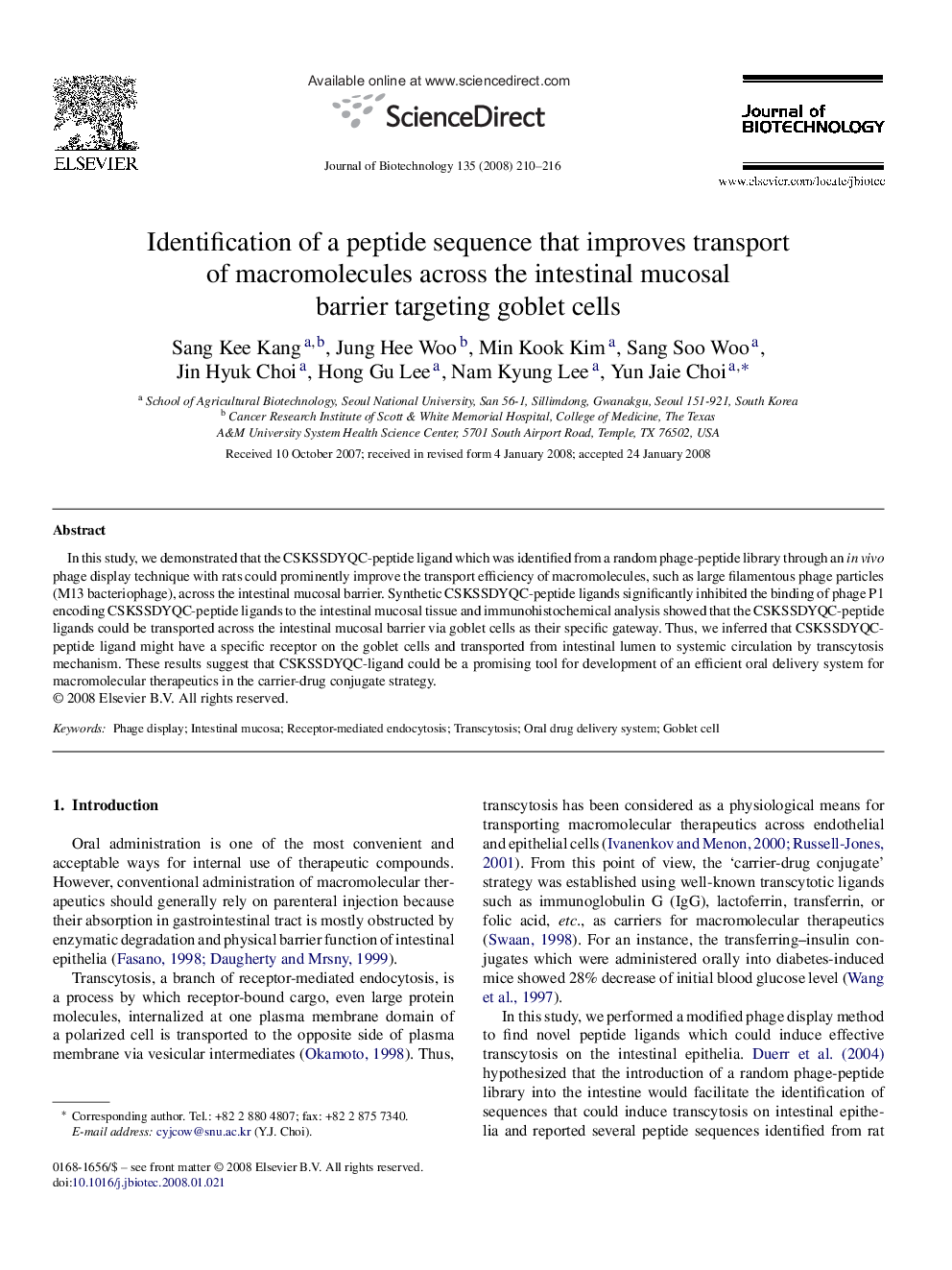| Article ID | Journal | Published Year | Pages | File Type |
|---|---|---|---|---|
| 24830 | Journal of Biotechnology | 2008 | 7 Pages |
In this study, we demonstrated that the CSKSSDYQC-peptide ligand which was identified from a random phage-peptide library through an in vivo phage display technique with rats could prominently improve the transport efficiency of macromolecules, such as large filamentous phage particles (M13 bacteriophage), across the intestinal mucosal barrier. Synthetic CSKSSDYQC-peptide ligands significantly inhibited the binding of phage P1 encoding CSKSSDYQC-peptide ligands to the intestinal mucosal tissue and immunohistochemical analysis showed that the CSKSSDYQC-peptide ligands could be transported across the intestinal mucosal barrier via goblet cells as their specific gateway. Thus, we inferred that CSKSSDYQC-peptide ligand might have a specific receptor on the goblet cells and transported from intestinal lumen to systemic circulation by transcytosis mechanism. These results suggest that CSKSSDYQC-ligand could be a promising tool for development of an efficient oral delivery system for macromolecular therapeutics in the carrier-drug conjugate strategy.
